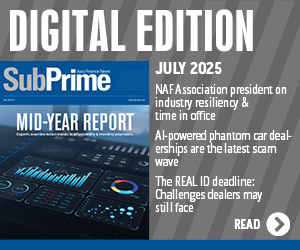S&P/Experian Spots ‘Healthy’ Credit Default Rates for May
NEW YORK — Analysts who compile the S&P/Experian
Consumer Credit Default Indices found a steady pattern for May as the auto loan
rate moved marginally while the composite reading remained unchanged.
S&P Dow Jones Indices and Experian determined May's auto
loan default came in at 1.04 percent, down slightly from the previous month's
reading of 1.07 percent. A year earlier, the auto loan rate settled at 1.03
percent.
Meanwhile, the national composite rate remained at its
post-recession low of 1.42 percent in May, the second consecutive month at that
level. In May of last year, the composite rate stood at 1.62 percent.
Like the composite rate, analysts discovered the first
mortgage default rate showed no change since April, coming in again at 1.31
percent in May.
The bank card rate ticked up just slightly to 3.63 percent
in May from 3.61 percent. The second mortgage default rate edged marginally
down to 0.60 percent in May from 0.62 percent a month earlier.
After looking at the May data intended to give a comprehensive
measure of changes in consumer credit defaults David Blitzer, the managing director
and chairman of the index committee for S&P Dow Jones Indices, offered his
assessment.
"Consumer credit quality looks healthy," Blitzer said. "The
first mortgage default rates remained at its post-recession low of 1.31 percent
in May. Bank card rates were marginally higher while the second mortgage and
auto loans were a touch lower this month. The second mortgage default rate hit
a new low of 0.60% since the indices began in 2004.
"All loan types remain below their respective levels a year
ago," he continued.
Three of the five cities S&P and Experian tracks for
this monthly report produced lower default rates in May.
Chicago and Dallas both decreased 15 basis points each with Dallas
coming in at 0.85 percent and Chicago settling at 1.55 percent, a post-recession
low.
Also notching a post-recession low was Miami as analysts
found the city's default rate dropped by 33 basis points to 1.88 percent.
The other two cities mentioned in the report had default
increases as Los Angeles rose 9 basis points to 1.45 percent and New York jumped
26 basis points to 2.04 percent.
For the first time since 2006, New York had the highest
default rate of 2.04 percent among the five cities covered," Blitzer said. Dallas
hit a historic low of 0.85% and has the lowest rate among the five cities.
"All five cities remain below default rates they posted a
year ago in May 2012," he added.
Jointly developed by S&P Indices and Experian, Blitzer
reiterated the S&P/Experian Consumer Credit Default Indices are published
monthly with the intent to accurately track the default experience of consumer
balances in four key loan categories: auto, bankcard, first mortgage lien and
second mortgage lien.
The indices are calculated based on data extracted from
Experian's consumer credit database. This database is populated with individual
consumer loan and payment data submitted by lenders to Experian every month.
Experian's base of data contributors includes leading banks
and mortgage companies and covers approximately $11 trillion in outstanding
loans sourced from 11,500 lenders.
Continue the conversation with SubPrime Auto Finance News on LinkedIn and Twitter.


